Topics: Sensing Today, Connecting Tomorrow
Application Specific Sensory Interface Circuits
ASIC for MEMS Inertial Sensors
How to guide smart UAVs in harsh environments (without GPS)? Micro-Inertial-Sensing Systems are the key. The major challenge is to eliminate low-frequency errors, including 1/f noise, and unpredictable drifts through advanced circuit design technologies.
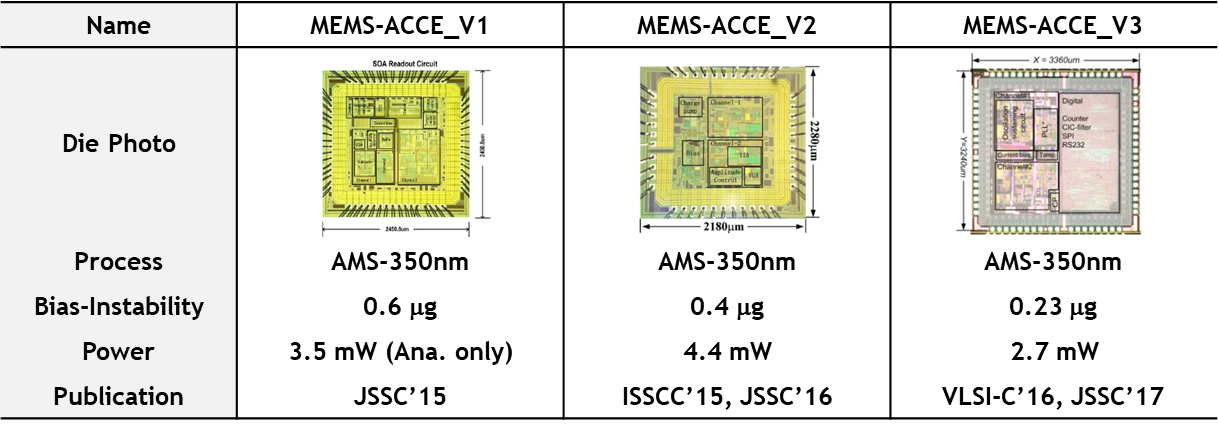 |
ASIC for Optical Brain-Computer Interfaces
Light time of flight (ToF) is a promising representation of brain activities due to its noninvasive and high-spatial resolution nature. The main challenge in circuit design is to break through the trade-off between power consumption (supporting a large number of channels) and ToF resolution (providing precise measurement).
For DEMO video, please visit: Bilibili Website
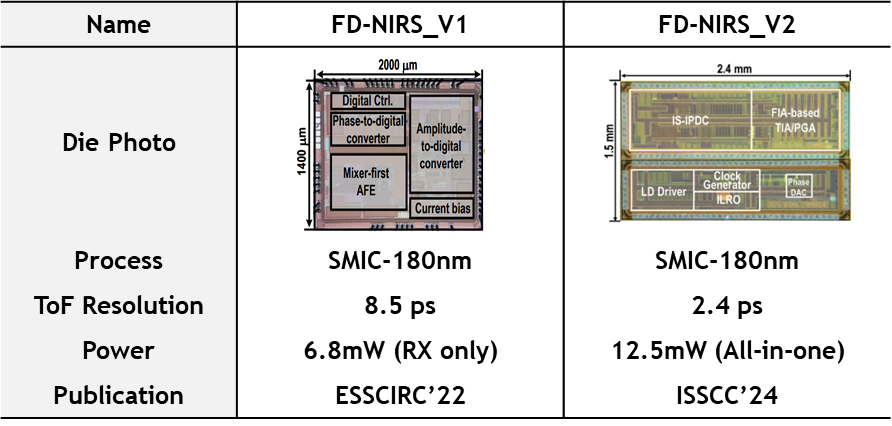 |
Emerging Technologies on Analog Integrated Circuits
Flexible Thin-Film Integrated Circuits
Benefiting from large-area and low-cost fabrication, flexible integrated circuits based on thin-film transistors (TFTs) enable ubiquitous Human-Machine Interaction (HMI) and Internet of Things (IoT) applications. However, designing effective circuits using emerging devices is fraught with challenges, ranging from EDA tools to high-robustness circuits.
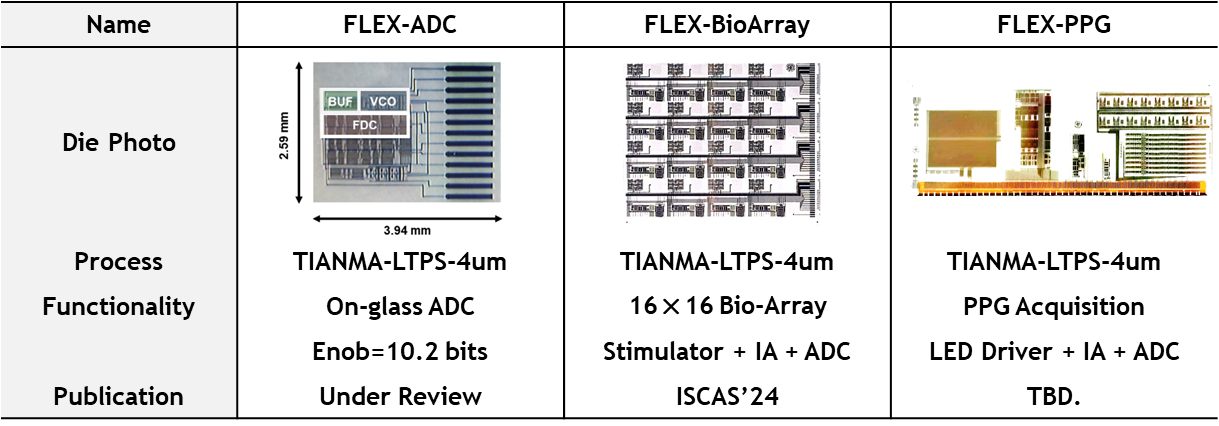 |
Body-Channel Transceivers on CMOS
The human body is traditionally considered a barrier to Radio-Frequency (RF) transmission. However, recent studies suggest that it may function as a 'bridge’ for signals in quasi-static fields. Body-channel communication has demonstrated an order-of-magnitude higher efficiency compared to its BLE and UWB counterparts. The main challenge for circuit designers is how to leverage this efficiency in the unstable and unpredictable body channel characteristics.
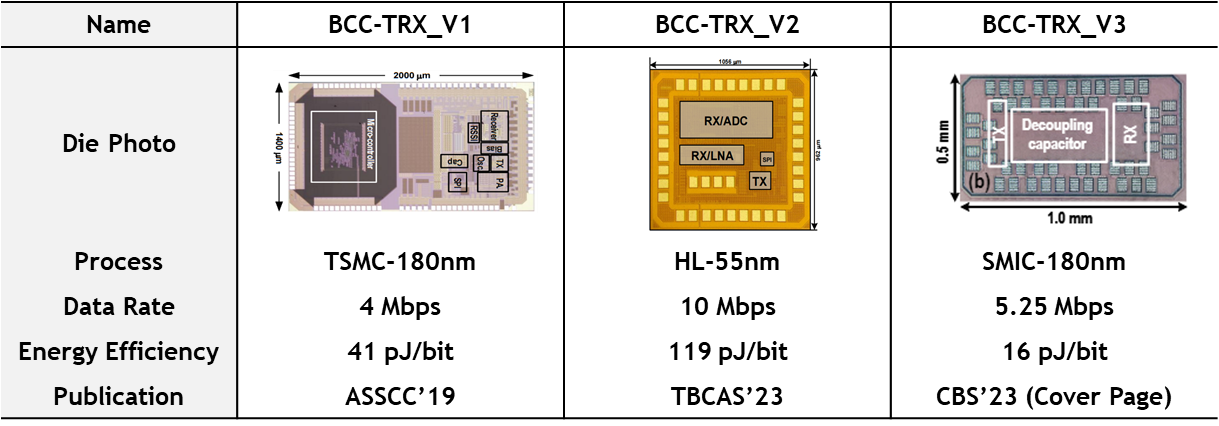 |
Artificial Spiking Neural Networks on CMOS
Silicon processors have supported the entire information world. However, their energy efficiency has plateaued with the end of Moore's Law, making it difficult to improve. On the other hand, the human brain is the most energy-efficient processor in the world. The question of how to achieve high-efficiency signal processing similar to the human brain using silicon transistors, which are entirely different from neurons, is a fascinating and challenging topic.
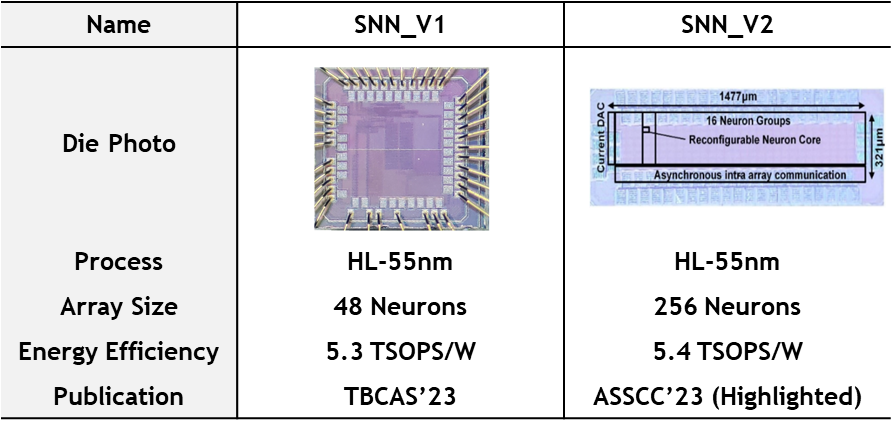 |